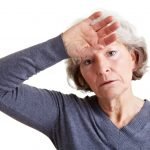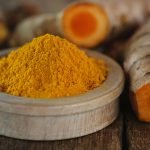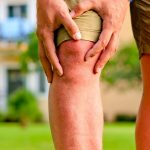Rheumatoid Arthritis: Integrating Naturopathic Modalities into Treatment
Cayla M. Bronicheski, MSc
Elaine Lewis, BSc, ND
Rheumatoid arthritis (RA) is the most common chronic inflammatory disease, but with many unknown causes and cures. Also known as idiopathic arthritis, RA is a debilitating autoimmune condition characterized by chronic systemic inflammation in the synovium surrounding 1 or many joints in the body; RA has a prevalence of roughly 1% in Canada, and 0.6% in the United States (adults).1 Common joint symptoms include swelling, pain, and joint deformities, as well as loss of strength and mobility.
Scientists are unaware of the causes that initiate rheumatic flare-ups; however, researchers suggest that psychological stress can make an individual more susceptible to environmental factors (such as infections with certain viruses or bacteria) that may trigger the disease.2 Although research into RA treatments is ongoing, there is currently no known cure. Several naturopathic practices, however, have demonstrated promising results in helping manage the livelihood of patients suffering with this disabling condition. With early diagnosis and effective treatment interventions to help alleviate pain and prevent joint destruction, there is strong evidence to support the integration of many naturopathic strategies into the treatment of RA patients, enabling them to live full and active lives. This paper will provide supportive evidence for the top conventional and naturopathic management strategies, so as to inform clinicians of the best treatment approaches for this complex disease.
Conventional Treatment
The conventional approach to RA largely involves pain management, inflammation reduction, and immunosuppression using a wide range of pharmaceutical agents. Common allopathic medical practices designed to attenuate symptom aggravation in RA patients result in side effects that impact one’s quality of life.3
Treatment plans are individualized to the patient and typically begin with non-steroidal anti-inflammatory drugs (NSAIDs) including ibuprofen and naproxen. As a second-line treatment in patients not showing symptom relief from NSAIDs, disease-modifying drugs (DMARDs) or biologic response modifiers (known as biologics) are administered. DMARDs act to alter the underlying disease by reducing disease progression rather than treating symptoms; examples include methotrexate and leflunamide, which act to decrease immune system activity. Biologics are proteins derived from human genes that are genetically engineered to inhibit specific targets of the immune system that play a critical role in the inflammatory pathways. Biologics include anti-tumor necrosis factor (TNF) agents, such as etanercept, infliximab, adalimumab, abatacept, anakinra, canakinumab, and tocilizumab.2,4 Each medication is associated with a plethora of side effects that must be monitored by a rheumatologist.
In cases where only a single joint is involved, a steroid can be injected into the affected joint before any other medication is administered. Oral steroids such as prednisone may be used in certain situations, but only for a short time and at the lowest dosage possible. Long-term use of steroids is associated with side effects such as weight gain, stunted growth, osteoporosis, cataracts, avascular necrosis, hypertension, and risk of infection.
Considering the many health repercussions of using conventional medical approaches of symptom management, patients with RA are turning to complementary and alternative medicine (CAM) practices for assistance.2,4 Improving the quality of life in individuals with RA is paramount through a combination of complementary treatment approaches, such as: exercise (tai chi), homeopathy, botanicals and Traditional Chinese Medicine (TCM) including acupuncture. One should not exclude a holistic approach with a mind-body connection when considering treatment therapies for RA.
Exercise: Tai Chi
Gentle exercise programs have long been documented as an effective technique to improve physical mobility in individuals with RA. Low-impact exercise, including tai chi, may have a profound effect on helping individuals with RA manage stress, reduce disease activity and pain, and improve physical functioning.5,6 Tai chi is an ancient Chinese martial arts practice that combines gentle movements and postures with mental focus and breathing techniques. Tai chi has been shown in several studies to help manage subjective symptoms of RA, such as depression and fatigue, as well as improve physical movement, range of motion, strength, and mobility.7 A recent study indicated that patients following a 12-week program of tai chi exercise twice weekly experienced improved lower-limb muscle strength, endurance and function, as well as a decrease in joint swelling.8 Patients also reported enjoyment and stress reduction, and increased confidence in their movement.8
It is well documented that physical activity is valuable for both the management of RA and overall disease prevention.5,6 Incorporating a regular tai chi practice into the treatment plan of patients with RA can be beneficial for both their mental and physical well-being. In order to maximize the breadth of an RA patient’s naturopathic protocol, a 12-week recommendation for tai chi practice 2-3 times per week, in which sessions last 60 minutes, may offer measureable benefits. If accessible to the patient, specific outcomes of improvement may be achieved using the “Twelve Movement Tai Chi for Arthritis Program.”9
The Homeopathic Consultation
In addition to physical challenges, the burden of living and coping with RA is linked to poor psychological health. Consequently, addressing psychosocial aspects of health are crucial in managing this condition.2 The homeopathic consultation itself has been shown to provide a valuable therapeutic benefit in RA, with patients reporting a sense of empowerment and an increase in well-being.10,11
A recent clinical trial assessed the value of using a homeopathic intervention (which included a consultation and the homeopathic remedy selection) in patients with RA.10 Results from the trial revealed statistically significant improvements in objective and subjective markers of illness, as a result of utilizing only the homeopathic consultation. Patients’ perceived benefits from the homeopathic consultation (which included improved general physical health, better disease management, and improved physical, emotional or spiritual well-being) were independent of achieving physical improvements. All RA participants reported some benefit from the homeopathic consultation, with the only negative being that participants were uncomfortable with disclosing personal information. Although the goal of performing a homeopathic consult is to select the appropriate remedy, patients in this study perceived the consultations alone to be holistic and individualized, which empowered them to better cope with their condition.10 By extension, similar benefits to RA patients may be achieved in general counseling sessions.
It is recommended to perform 5 face-to-face homeopathic consultations within a 24-week timeframe, with each consult lasting a minimum of 60 minutes. Although remedies do not have to be given to reap the benefits of the homeopathic consult, an individualized remedy may be selected to maximize RA outcomes.10-12 Homeopathic remedies have not yet been shown to produce statistically significant improvements in RA symptoms compared to placebo controls.12,13 The homeopathic consult alone is an effective naturopathic modality that can be used to empower RA patients, and provide psychosocial support, to help them live with this chronic condition.
Essential Fatty Acids & Botanical Medicine
Gamma Linolenic Acid
The omega-6 fatty acid, gamma linoleic acid (GLA), can help alleviate RA symptoms via its conversion to dihomo- γ-linolenic acid (DGLA), which serves as a source of anti-inflammatory prostaglandin E1. GLA is derived from a variety of plant oils, including: borage seed (Borago officionalis), black currant seed (Ribes nigum) and – more commonly – evening primrose (Oenothera biennis).
Some studies have found that the use of low-dose preparations of 500 mg GLA per day significantly improved RA patients’ morning stiffness, and self-assessment of their condition, and enabled many of them to lower their NSAID intake.14 Other studies found that significant benefits from GLA were achieved in RA only by using doses of 1400-2800 mg per day for at least 6 months.15
GLA is generally considered safe, though may produce some gastrointestinal side effects, including soft stool, belching, gas, diarrhea, and a reduction in blood coagulation time.16
Curcumin
A clinical study compared the effectiveness of 500 mg curcumin vs 50 mg diclofenac sodium (alone or in combination) on the reduction of joint tenderness and swelling by monitoring disease activity scores (DAS) in patients with active RA.15 Results showed that patients taking curcumin had the highest statistically significant improvement in their DAS scores.
Curcumin acts similarly to anti-TNF medications but without their serious side effects, and is safe and well tolerated among patients.17 Future studies using curcumin in combination with other standard therapies or as a stand-alone treatment are encouraged, to provide a complete picture of curcumin efficacy. Curcumin and GLA may share similar degrees of effectiveness in the treatment of RA. Although many botanicals can be indicated in RA, studies suggest that a combined treatment of 1400-2800 mg GLA and 500 mg curcumin may be considered a safe treatment option with limited adverse effects.
Acupuncture
Now a widely accepted intervention for the treatment of several musculoskeletal conditions, acupuncture is an energetic, non-invasive, and affordable method of treating patients with RA by reducing joint pain and improving joint mobility. It is thought that acupuncture can modulate pain transmission and response through endorphin and neuropeptide release upon needle insertion.18
Although repeatedly proven useful for pain and injury, few studies have been able to produce definitive conclusions regarding beneficial effects of acupuncture in RA patients; however, most of these studies had several limitations.18,19 For example, a recent study16 compared the use of a single-point (Liver-3) acupuncture treatment to placebo in rheumatic patients, where a total of 5 treatments were given on separate occasions and each treatment lasted only 4 minutes. Patient outcomes were measured in terms of inflammatory markers (erythrocyte sedimentation rate and C-reactive protein), visual analogue scale of pain, global patient assessment, 28 swollen and tender joint count, and a general health questionnaire. Results showed that the single-point treatment was incapable of inducing any significant endogenous endorphin or encephalin response. The mechanism of pain in patients with RA (inflammatory cytokines) is different than that of mechanical or degenerative diseases, which may partially explain why acupuncture-stimulated endorphin release was not effective in RA pain management in this study.18
On the other hand, a TCM approach regards RA as a complex digestion disorder in which all of the 5 primary organs have been damaged. The goal is thus to restore digestive health along with cleansing and replenishing the liver so that all organs are harmoniously supported to effectively reduce pain. In contrast to the study mentioned above, TCM typically involves protocols that utilize a combination of points, including local points in the affected joints. Following an indicated TCM protocol, needles should also be left in situ for 30 minutes (or upwards to an hour for RA patients) at least twice per week, for a total of 5 weeks. A 5-week timeframe is a reasonable treatment period for conditions with chronic nociceptive pain. While many naturopathic modalities have been shown to be useful in treatment interventions for patients with RA, further investigation is warranted to explore the mechanisms of acupuncture as a useful adjunct to therapy for RA.18,20
Conclusion
Modalities practiced by naturopathic physicians have profound effects not only on the physical and psychosocial level, but also on the empowerment of patients through collaborative and participatory relationships.21,22 Gentle exercise, homeopathy, botanicals, and TCM practices are among the modalities that naturopathic doctors can utilize to help rheumatic patients manage and cope with their chronic condition (see Table 1 for RA treatment recommendations). By enabling RA patients to gain coping skills rather than focus on the physical limitations of their illness, their experience can be drastically altered and the treatment effectiveness can be improved.20 There is no doubt that naturopathic modalities can play an integral role in the efficacy of countless autoimmune treatment plans. Since individuals with RA often seek options outside of conventional medicine, a partnership that includes open dialogue between patients and their healthcare providers is paramount in integrating effective CAM practices into routine treatment options for patients with RA.
Table 1. RA Recommendations Using CAM Treatments
| Modality | Intervention | Naturopathic Treatment Recommendation |
| Physical Activity | Tai chi7,8 | 60-minute practice twice weekly x 12 weeks |
| Homeopathy | Consultation | 60-minute face-to-face interviews q 4 weeks, with at least 5 consultations in a 24-week time period
|
| Botanical Medicine | GLA (borage, black currant seed, or evening primrose oil)14,15; curcumin17 | 1400-2800 mg GLA daily x 6 months
500 mg curcumin BID x 8 weeks |
| TCM Acupuncture* | Points: ST-36, ST-25, LI-11, KD-3, SP-9, LV-2, LI-5, TE-4, SI-5, ST-6 and ST-7 | 1) Needles should be left in situ for 30 minutes (or upwards to an hour for RA patients) at least 2 times per week for a total of 5 weeks.
2) Although TCM is personalized, the following acupuncture protocol can be used as a general guideline: To replenish qi and blood (common TCM deficiencies in RA patients), ST-36 can be needled in combination with ST-25. 3) Additionally, the following points are indicated for RA patients: LI-11 (anti-inflammation, pain reduction); KD-3 (to strengthen kidney qi); SP-9 (to remove dampness); LV-2 (to regulate flow of liver qi); LI-5, TE-4 and SI-5 (to reduce wrist pain); ST-6 and ST-7 (if TMJ issues are present). 4) Additionally, each affected joint can be directly needled. |
*Recommendations based on training with Dr Ellen Wu (London, Ontario) and on anecdotal reports
 Cayla M. Bronicheski, MSc, is a second-year student at the Canadian College of Naturopathic Medicine and has a passion for research. Cayla completed a thesis-based Masters of Science Min biology, in which she studied environmental stressors on the aquatic food system with human health implications. Cayla is a registered yoga teacher (RYT 200) and enjoys distance running; she has completed several half- and full marathons. She is passionate about the field of naturopathy and cannot wait to help people get well. For more information, visit: www.caylabronicheski.com.
Cayla M. Bronicheski, MSc, is a second-year student at the Canadian College of Naturopathic Medicine and has a passion for research. Cayla completed a thesis-based Masters of Science Min biology, in which she studied environmental stressors on the aquatic food system with human health implications. Cayla is a registered yoga teacher (RYT 200) and enjoys distance running; she has completed several half- and full marathons. She is passionate about the field of naturopathy and cannot wait to help people get well. For more information, visit: www.caylabronicheski.com.
 Elaine Lewis, BSc, ND, is a naturopathic physician and the Programs and Outreach Coordinator at the Canadian College of Naturopathic Medicine. Prior to her medical studies, she attended McMaster University, earning her Honors Bachelor of Science in behavioral neuroscience. As a graduate of CCNM’s research residency, she has been involved with research on hypertension, irritable bowel syndrome, and women’s health. Elaine practices in Mississauga Ontario at Back to Play Chiropractic Clinic, where she treats adults with a variety of health concerns. Her clinical interests lie in the management of cardiovascular disease, digestion, endocrinology, and women’s health. For more information, follow @ElaineLewisND on Twitter or visit www.elainelewisnd.com.
Elaine Lewis, BSc, ND, is a naturopathic physician and the Programs and Outreach Coordinator at the Canadian College of Naturopathic Medicine. Prior to her medical studies, she attended McMaster University, earning her Honors Bachelor of Science in behavioral neuroscience. As a graduate of CCNM’s research residency, she has been involved with research on hypertension, irritable bowel syndrome, and women’s health. Elaine practices in Mississauga Ontario at Back to Play Chiropractic Clinic, where she treats adults with a variety of health concerns. Her clinical interests lie in the management of cardiovascular disease, digestion, endocrinology, and women’s health. For more information, follow @ElaineLewisND on Twitter or visit www.elainelewisnd.com.
References:
- Wong R, Davis AM, Bradley E, et al. Prevalence of Arthritis and Rheumatic Diseases Around the World. April 2010. Models of Care in Arthritis, Bone & Joint Disease. Available at: http://www.modelsofcare.ca/pdf/10-02.pdf. Accessed June 27, 2015.
- Curtis R, Groarke A, Coughlan R, et al. Psychological stress as a predictor of psychological adjustment and health status in patients with rheumatoid arthritis. Patient Educ Couns. 2005;59(2):192-198.
- Fries JF, Williams CA, Ramey DR, et al. The relative toxicity of alternative therapies for rheumatoid arthritis: implications for the therapeutic progression. Semin Arthritis Rheum. 1993;23(2 Suppl 1):68-73.
- Taibi DM, Bourguignon C. The role of complementary and alternative therapies in managing rheumatoid arthritis. Fam Community Health. 2002;26(1):41-52.
- Van Den Ende CH, Vliet Vlieland TP, Munneke M, Hazes JM. Dynamic exercise therapy for rheumatoid arthritis. Cochrane Database Syst Rev. 2000;(2):CD000322.
- Hakkinen A, Pakarinen A, Hannonen P, et al. Effects of prolonged combined strength and endurance training on physical fitness, body composition and serum hormones in women with rheumatoid arthritis and in healthy controls. Clin Exp Rheumatol. 2005;23(4):505-512.
- Han A, Robinson V, Judd M, et al. Tai chi for treating rheumatoid arthritis. Cochrane Database Syst Rev. 2004;(3):CD004849.
- Uhlig T, Fongen C, Steen E, et al. Exploring Tai Chi in rheumatoid arthritis: a quantitative and qualitative study. BMC Muskuloskelet Disord. 2010;11:43.
- Lam P. New horizons… developing tai chi for health care. Aust Fam Physician. 1998;27(1-2):100-101.
- Brien SB, Leydon GM, Lewith G. Homeopathy enables rheumatoid arthritis patients to cope with their chronic ill health: A qualitative study of patient’s perceptions of the homeopathic consultation. Patient Educ Couns. 2011;89(3):507-516.
- Hyland M. Using the placebo response in clinical practice. Clin Med. 2003;3(4):347-350.
- Andrade LEC, Ferraz MB, Atra E. A randomized controlled trial to evaluate the effectiveness of homeopathy in rheumatoid arthritis. Scand J Rheumatol. 1991;20(3):204-208.
- Fisher P, Scott DL. A randomized controlled trial of homeopathy in rheumatoid arthritis. Rheumatology. 2001;40:1052-1055.
- Kolasinski SL. Herbal medicine for rheumatic diseases: promises kept? Curr Rheumatol Rep. 2012;14(6):617-623.
- Cameron M, Gagnier JJ, Little CV, et al. Evidence of effectiveness of herbal medicinal products in the treatment of arthritis. Part 2: Rheumatoid arthritis. Phytother Res. 2009;23(12):1647-1662.
- Gamma Linolenic Acid Side Effects and Safety. 2009. WebMD Web site. http://tinyurl.com/qypd33n. Accessed June 17, 2015.
- Chandran B, Goel A. A randomized, pilot study to assess the efficacy and safety of curcumin in patients with active rheumatoid arthritis. Phytother Res. 2012;26(11):1719-1725.
- David J, Townsend S, Sathanathan R, et al. The effect of acupuncture on patients with rheumatoid arthritis: a randomized, placebo-controlled cross-over study. Rheumatology (Oxford). 1999:38(9):864-869.
- Casimiro L, Barnsley L, Brosseau L. Acupuncture and electroacupuncture for the treatment of rheumatoid arthritis. Cochrane Database Syst Rev. 2005;(4):CD003788.
- Hughes JG. ‘‘When I first started going I was going in on my knees, but I came out and I was skipping’’: exploring rheumatoid arthritis patients’ perceptions of receiving treatment with acupuncture. Complement Ther Med. 2009;17(5-6):269-273.
- Evans MA, Shaw AR, Sharp DJ, et al. Men with cancer: is their use of complementary and alternative medicine a response to needs unmet by conventional care? Eur J Cancer Care (Engl). 2007;16(6):517-525.
- Kelner M, Wellman B. Health care and consumer choice: medical and alternative therapies. Soc Sci Med. 1997;45(2):203-212.









